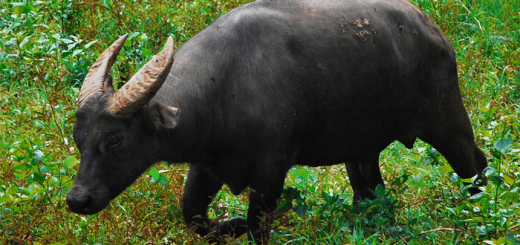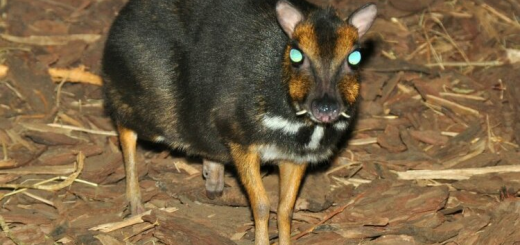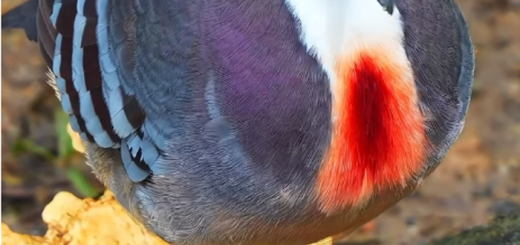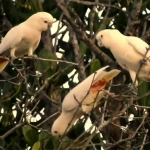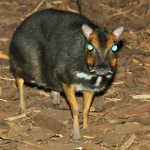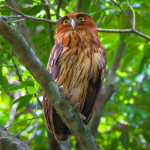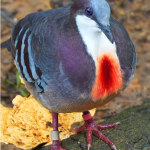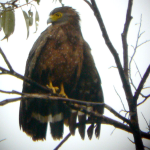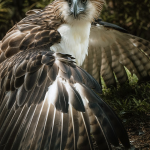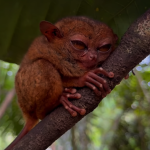Philippine Tarsier
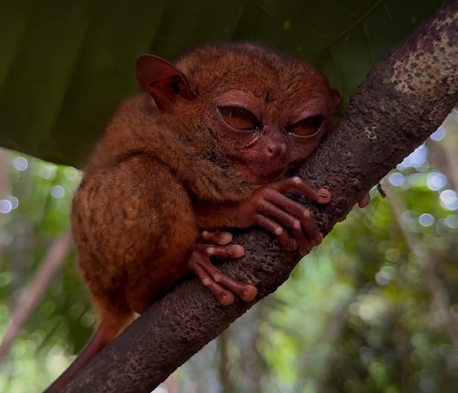
The Philippine Tarsier, known as the “world’s smallest monkey”, is a species of tarsier endemic to the Philippines. It is found in the southeastern part of the archipelago, particularly on the islands of Bohol, Samar and Leyte. It is one of the oldest species that have existed continuously in the Philippines, dating from the early Eocene period, 45 million years ago. Formerly a member of the genus Tarsius, it is now listed as the only member of the genus Carlito, a new genus named after the Filipino conservationist Sir Carlito Pizarras.
The Philippine tarsier measures 3.35 to 6.30 inches in height, about the size of an adult human fist, making it one of the smallest primates. It has thin, rough fur which is colored gray to dark brown. The narrow tail, usually used for balance, is bald except for a tuft of hair at the end and is about twice the body length. Its elongated “tarsus”, or ankle bone, which gives the tarsier its name, allows it to jump at least 3 m from tree to tree. Its long digits are tipped with rounded pads that allow the tarsier to cling easily to trees and grip almost any surface. The thumb is not truly opposable, but the first toe is. All of the digits have flattened nails, except for the second and third toes, which have sharp claws specialized for grooming. Like all tarsiers, the Philippine tarsier’s eyes are fixed in its skull; they cannot move in their sockets. Instead, a special adaptation in the neck allows its round head to be rotated 180°. Their eyes are disproportionately large, having the largest eye-to-body weight ratio of all mammals. These huge eyes provide this nocturnal animal with excellent night vision. In bright light, the tarsier’s eyes can constrict until the pupil appears to be only a thin spot. In low light or darkness, the pupil can dilate and fill up almost the entire eye. The large membranous ears are mobile, appearing to be almost constantly moving, allowing the tarsier to hear any movement.
They are nocturnal but are also active at dawn and dusk. During the day they sleep in dense vegetation or sometimes in a hollow tree. At sunset, they begin searching for insect prey. They are agile acrobats, easily leaping vertically from tree to tree. Philippine tarsiers are solitary but may sometimes associate in groups of four animals or fewer. They demonstrate little fear of other species and especially humans unless a quick movement is made. When they are threatened they make a high-pitched squeak. Although less vocal than other primates, a tarsier uses a variety of means of communication, including calls for territorial maintenance and the spacing of males and females. They also use scent marks from glandular secretions to delineate their territories.
This small mammals has various distinctive habits and characteristics that make it an object of both popular curiosity and scientific research.
Here are some interesting facts to know about the Philippine Tarsier.
- One eye is bigger than it’s brain.
- They are nocturnal animals and should not be disturbed at day time.
- Their main diet is insects and should not be fed with meat.
- They commit suicide during captivity due to trauma from touching and loud noise.
- They’re one of the slowest fetal growth rates of any mammal, taking 6 months to reach a birth weight of 23 grams.
- They can turn their heads 180 degrees left, and 180 degrees right. Total of 360 degrees.
- Their ears move to the direction of sound.
- They have 1 baby per year. (2 baby per year is possible but seldom)
- The Philippine Tarsier is very territorial. One tarsier has a 1 hectare territory.
- In establishing territory, male tarsiers fight to the death.
- Male tarsier even practice infanticide where the male tarsier kils a baby tarsier in his territory if it’s his offspring.
- Tarsiers can jump 3-5 meters.
Scientific name: Carlito syrichta
Family: Tarsiidae
References:
https://en.wikipedia.org/wiki/Philippine_tarsier

